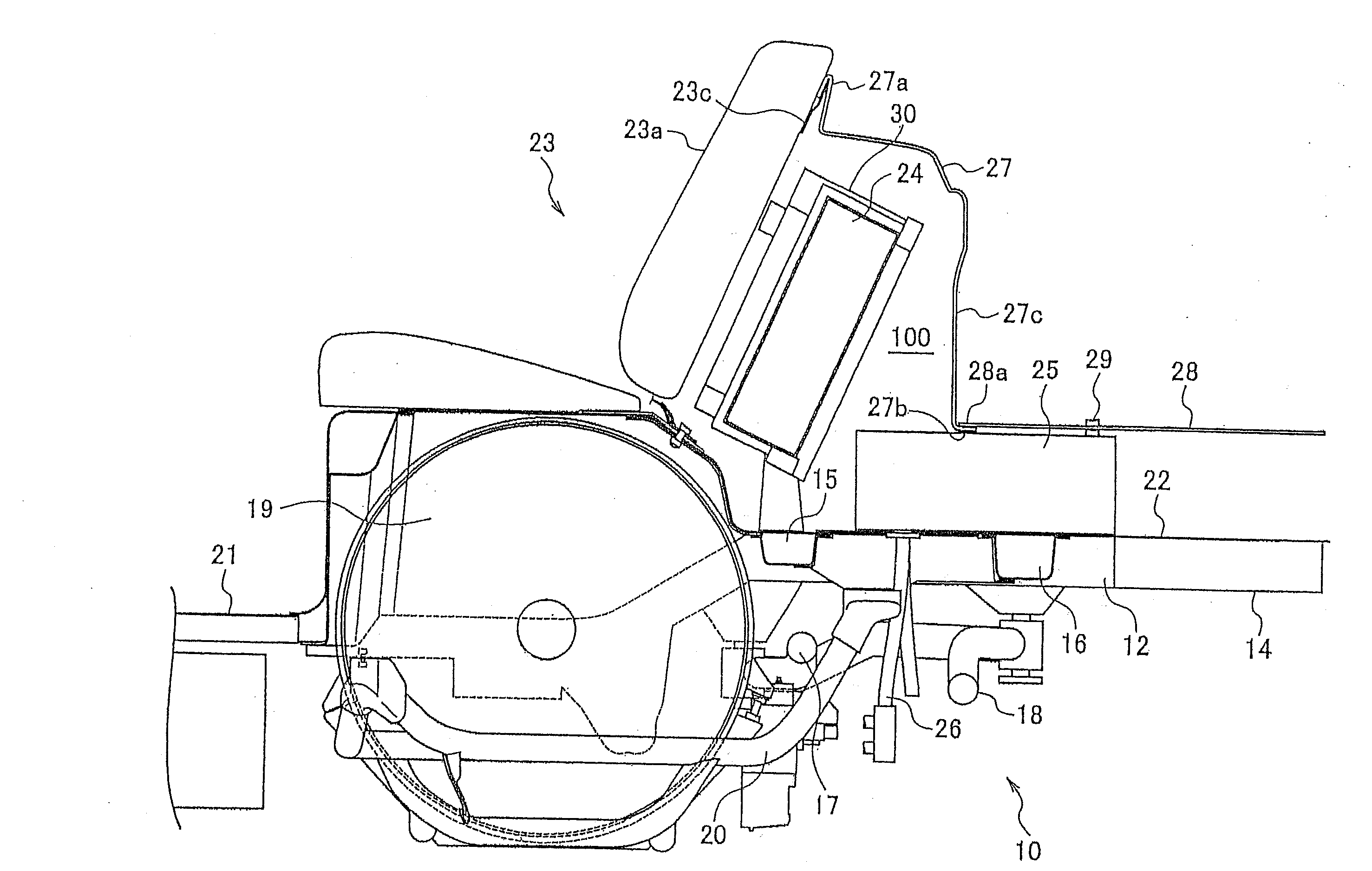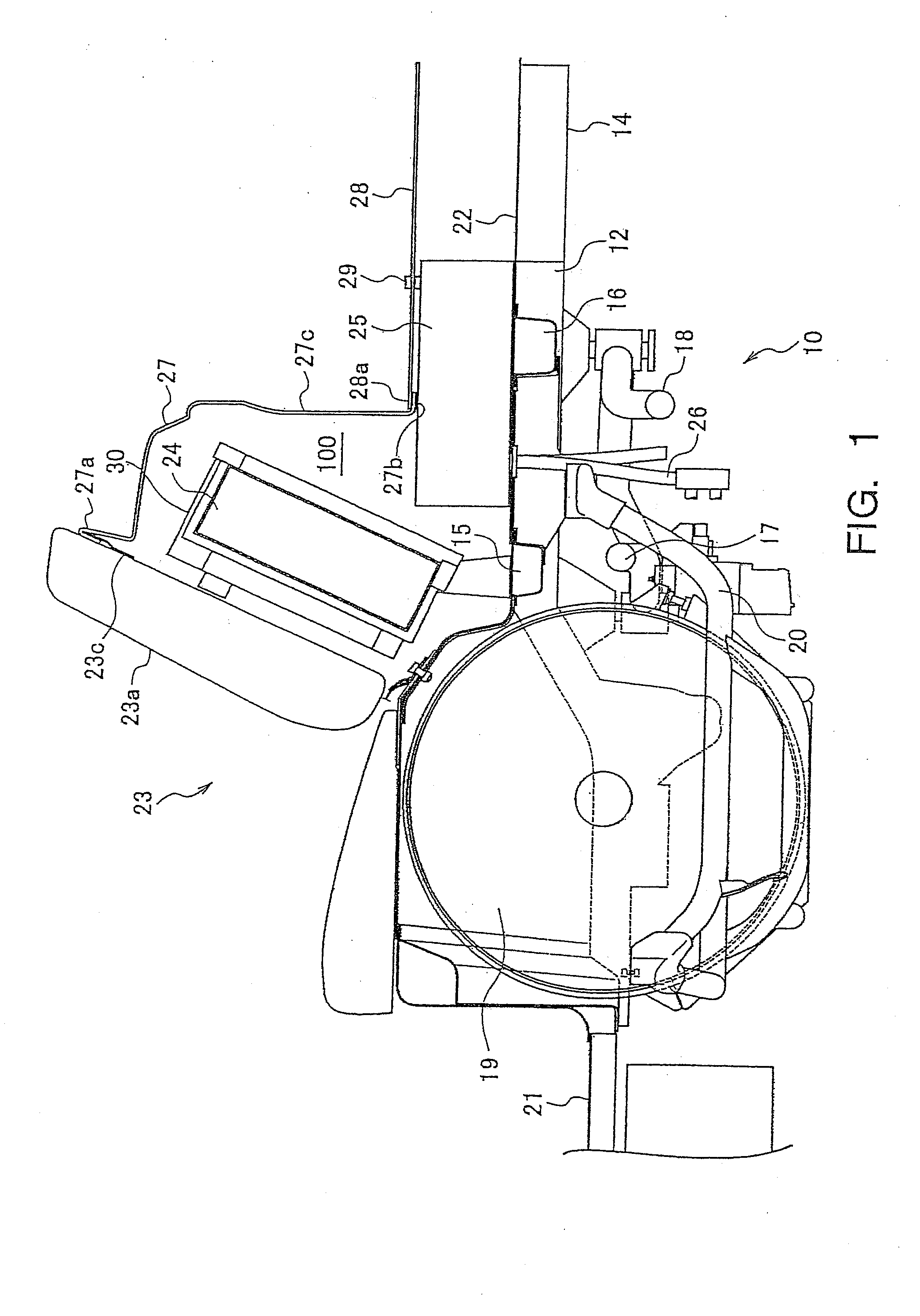Rear vehicle structure
a technology for rear vehicles and structures, applied in the direction of electric propulsion mounting, propulsion by batteries/cells, jet propulsion mounting, etc., can solve the problems of complex structure, increased weight, and multiple assembly procedures, and achieves high structural rigidity, increased user access difficulty, and cost reduction
- Summary
- Abstract
- Description
- Claims
- Application Information
AI Technical Summary
Benefits of technology
Problems solved by technology
Method used
Image
Examples
first embodiment
[0035]FIG. 1 and FIG. 2 describe a first embodiment of the rear vehicle structure 10, wherein FIG. 1 is an general cross section of the structures peripheral to a fuel tank 19 located in the rear portion of the vehicle 102, and FIG. 2 is a view of the FIG. 1 structure from below. FIG. 12 shows, generally, how the rear vehicle structure 10 is arranged within a typical vehicle 102. FIG. 1 provides a cross sectional view of a set of rear side members 11, 12 and a set of rear suspension members 17, 18 (and surrounding components) which are laid out along the center line of rear vehicle structure (and of the vehicle 102). Illustrational cross hatching has been omitted in FIG. 1. The following will describe the first embodiment of the invention with reference to FIG. 1 and FIG. 2.
[0036]The main components of rear vehicle structure 10 that are shown in FIGS. 1 and 2 are the rear side members 11 and 12 oriented along the lengthwise direction of the vehicle on the left and right sides, a set...
second embodiment
[0052]The following will describe a second embodiment of a vehicle rear structure according to the invention. FIG. 3 is a general cross section of the region surrounding to a fuel tank 19 installed in the rear portion of a vehicle. The element numbers in FIG. 3 refer to the same components identified by those numbers in FIG. 1. This second embodiment describes a rear vehicle structure 10A in which a secondary battery (second electrical system unit) 24 is placed on the rear cross members 15 and 16. A DC / DC converter (first electrical system unit) is not shown in FIG. 3.
[0053]In the second embodiment, the secondary battery 24 is installed with the leading or forward edge 31 of the battery case 30 placed over the cross sectional region of rear cross member 15, and trailing or rearward edge 32 is placed over the cross sectional region of rear cross member 16. As illustrated in the FIG. 4 (plan) view, the secondary battery 24 is secured to the vehicle 102 at two locations, one being at t...
PUM
 Login to View More
Login to View More Abstract
Description
Claims
Application Information
 Login to View More
Login to View More - R&D
- Intellectual Property
- Life Sciences
- Materials
- Tech Scout
- Unparalleled Data Quality
- Higher Quality Content
- 60% Fewer Hallucinations
Browse by: Latest US Patents, China's latest patents, Technical Efficacy Thesaurus, Application Domain, Technology Topic, Popular Technical Reports.
© 2025 PatSnap. All rights reserved.Legal|Privacy policy|Modern Slavery Act Transparency Statement|Sitemap|About US| Contact US: help@patsnap.com



